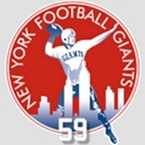Bullwinkle58
Posts: 11302
Joined: 2/24/2009
Status: offline

|
Jocke:
Per our recent passes about Swedish influence in the US, this article appeared in today's local newspaper, the Minneapolis Star-Tribune. I don't know if it's common knowledge there about the Scandinavian roots in the northern US, but this gives an idea how they're evolving over time. It was too long to PM, so . . .
"Uff da! Twin Cities Nordic ties fade
Article by: DAVID PETERSON , Star Tribune Updated: September 19, 2013 - 12:15 AM
Census surveys find Scandinavian, German influence strong but melding.
Viveka Olai Stenberg settled into a table in the elegant new cafe of the American Swedish Institute in south Minneapolis and gazed at the faces around her. She asked herself, “Do these people really look Swedish?”
The visiting Swede peered at them one by one and decided the answer was “maybe.”
U.S. Census surveys released on Thursday yield an equally mixed response. More than a century after the great wave of European immigration, the Twin Cities area is still tremendously more Norwegian, Swedish and German than other metro areas. But the numbers are dwindling as an elderly immigrant population passes from the scene or retires to other places.
In just five years, surveys suggest, the number of Twin Cities metro residents calling themselves German-, Norwegian- or Swedish-American — the three biggest groups, by far — has dropped by nearly 100,000. Younger people increasingly are just saying “American” as generations of intermarriage dilute ethnic identity.
Still, one is nine or 10 times as likely to come across a person identifying as Nordic here than in other metro areas, according to the American Community Survey data, which trace the slow arc of demographic change across the nation.
Tom Holman, 60, of south Minneapolis is typical. He’s “half Swedish with other things mixed in.” He’s watched as Swedishness has faded in his family, from a grandmother who didn’t even speak English until age 8, to being the only one among his siblings who speaks the language, to having nieces and nephews who frankly “don’t carry it on” at all.
After more than 100 years in which the area’s Nordic flavor has profoundly marked the culture of Minnesota, groups like the Swedish Institute or the Sons of Norway can feel a fading of personal ties while hoping that the heritage still means something.
“If the measure is head count, then, yeah, there probably is an ongoing, gradual diminution,” said Bruce Karstadt, the institute’s president and CEO and the honorary consul general for Sweden.
“Does that mean interest is diminishing? I would say not.”
His counterpart at the Sons of Norway, Eivind Heiberg, detects an upsurge because of the precise demographic moment: a time when baby boomers are nearing retirement and thinking about the past.
“All of a sudden there’s a realization that, hey, their parents are in their 70s and 80s and will not be around forever, and it’s up to me to sort of carry the torch,” he said. “There’s a need they feel, and that’s where we see more and more people reaching out.”
German ancestry is the single most pronounced ethnicity in the Twin Cities area, at 32 percent. German is also the leading ethnicity across most of the northern tier of the United States.
But a strong Scandinavian band stretching through Minnesota from western Wisconsin into North Dakota has long marked us culturally as much as the French influence in Louisiana.
On a religious map, Lutherans leap out here in the same way that Mormons do in the West.
That, in turn, has influenced a powerful Minnesota involvement in refugee resettlement that is creating equally unusual distribution patterns among recent immigrants, such as Hmong and Africans. The latest census numbers show that although Twin Citians are much likelier to be native-born Americans than people in other metro areas, they are also much likelier to have been born in Africa than residents elsewhere.
Slow erosion
The wave of Nordic immigration came in the late 19th and early 20th century. In some families, the sense of identification remains.
Chris Reitan Gerber, of Orono, said her Swedish immigrant parents met here in 1928 and never lost their accents or their sense of the old country as “home.” Her daughter and granddaughter have visited Sweden. Stenberg is her cousin, here from Sweden on a second trip to Minnesota to reconnect with family.
It’s a very different feeling being here, Stenberg said, as opposed to New York or Florida.
“People here do look more like those at home,” she said, “and they are so interested when they find out you’re Swedish. At a yoga class, or anywhere you happen to be, they light up when they hear it, and talk about their own relatives.”
Still, the census numbers speak to a gradual erosion of personal ties to the old country.
Since 2008, the share of Twin Citians identifying as German has slipped from 35.4 percent to 32.2 percent, dropping slightly each year.
In the same period, the share of Norwegians has dropped similarly, from 14.8 percent to 13.4 percent. The share of Swedes has fallen less sharply, from 9.7 percent to 9.2 percent but follows the same basic course.
Experts are quick to point out that none of these ancestries is truly going anywhere: Descendants keep multiplying. But once a person is no longer 80 percent but 20 percent, intermingled with multiple ethnicities after generations of marriage, the question of what they “are,” if anything, becomes vague.
New interest
Could the loss of something people used to take for granted wind up encouraging a reawakening of interest in those roots?
It maybe already is. “We’re seeing record participation in our youth programming,” said Laura Cederberg, spokeswoman for the Swedish Institute, over a burble of conversation from the organization’s newly expanded building, with its cafe, gift shop and other facilities created by architects who visited Sweden to drink in contemporary Nordic design.
At the Sons of Norway, Heiberg admires how the institute has lured in Generation Ikea, and he hopes to do the same using vehicles such as the website NorwayConnects.
In chapters all across North America, he said, “we are putting on a variety of programs, from how to create traditional Norwegian art — woodcarving and so on — to programs and resources on genealogy. It’s a struggle for all membership groups these days. Younger people are less likely to turn up at a building once a week, but we’re optimistic. It’s important to keep the connection alive.”
< Message edited by Bullwinkle58 -- 9/19/2013 1:33:26 PM >
_____________________________
The Moose
|
 Printable Version
Printable Version















 If you are right that would SUCK.
If you are right that would SUCK. 









 And with the new BETA it will take over a week before they are repaired. Despite 4000 AS at Rangoon. In the meantime the 2Es keep up the bombings from 20k. Just to burn supply and slow his stack down.
And with the new BETA it will take over a week before they are repaired. Despite 4000 AS at Rangoon. In the meantime the 2Es keep up the bombings from 20k. Just to burn supply and slow his stack down. 



 New Messages
New Messages No New Messages
No New Messages Hot Topic w/ New Messages
Hot Topic w/ New Messages Hot Topic w/o New Messages
Hot Topic w/o New Messages Locked w/ New Messages
Locked w/ New Messages Locked w/o New Messages
Locked w/o New Messages Post New Thread
Post New Thread